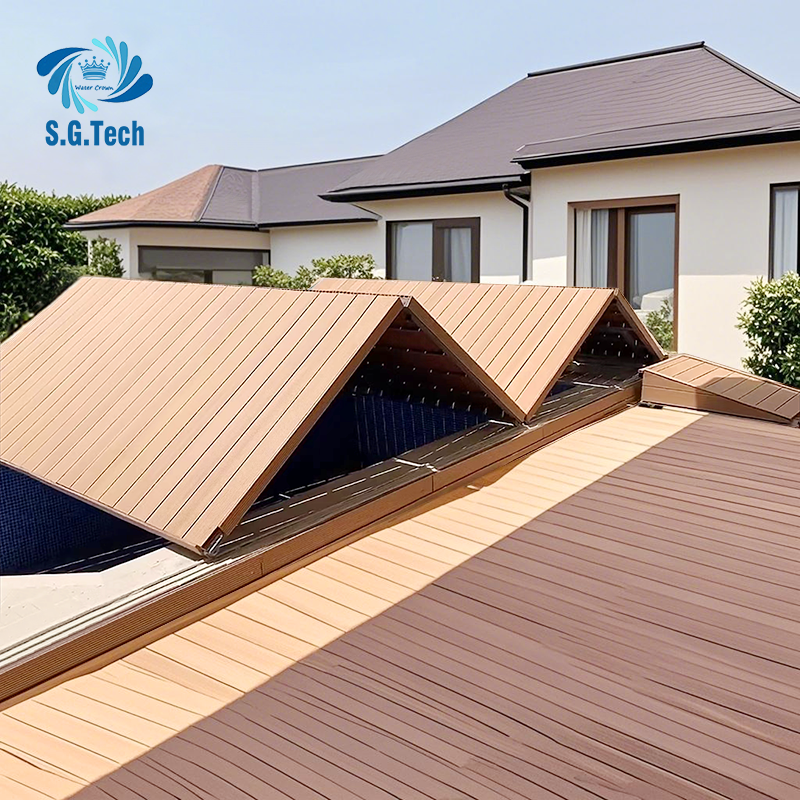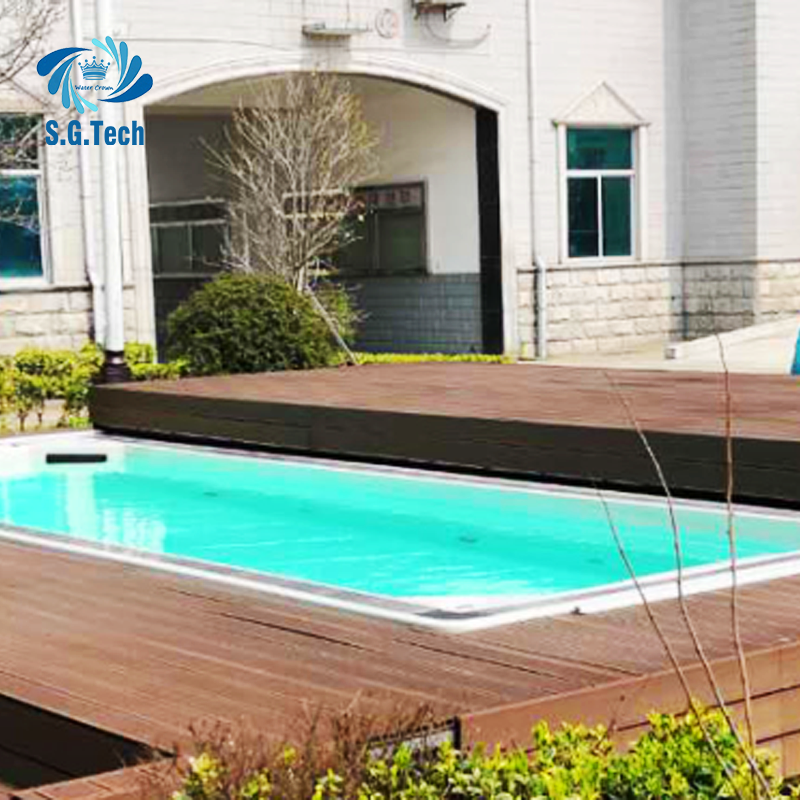
Einzugbare Poolabdeckungen sind vielseitige Geräte, die die Poolverwaltung revolutioniert haben und eine breite Palette an Vorteilen bieten, die auf verschiedene Pooltypen zutreffen, von kleinen überdachten bis zu großen eingebauten Installationen. Im Kern bieten diese Abdeckungen eine flexible Lösung für Poolbesitzer, die die Sicherheit verbessern, den Wartungsaufwand reduzieren und die Energieeffizienz optimieren möchten. Die Materialauswahl für einziehbare Poolabdeckungen ist vielfältig. Neben PVC wird Polyethylen ebenfalls häufig verwendet, das sich durch sein geringes Gewicht auszeichnet, während es immer noch ausreichende Stärke bietet. Es bietet gute UV-Strahlungsbeständigkeit und ist weniger anfällig für Risse oder Verfärbungen im Laufe der Zeit. Einige hochwertige Modelle können spezialisierte Stoffe mit verbesserten Eigenschaften verwenden, wie erhöhter Elastizität für einen besseren Sitz oder verbesserter Chemikalienbeständigkeit. Die Wahl des Materials hängt oft von Faktoren wie Poolgröße, Klima und Budget ab. Das Rückrollsystem unterscheidet sich in der Komplexität. Manuelle einziehbare Poolabdeckungen basieren auf einem Kurbelmekanismus, der erfordert, dass der Benutzer einen Hebel manuell dreht, um die Abdeckung auf eine Rolle zu ziehen. Diese Art ist eine kostengünstige Option, geeignet für kleinere Pools oder solche mit einem engen Budget, und bietet eine handwerkliche Herangehensweise an die Poolverwaltung. Im Gegensatz dazu nutzen motorisierte einziehbare Poolabdeckungen Elektromotoren, um den Öffnungs- und Schließungsprozess zu automatisieren. Diese Motoren werden normalerweise von einer Standardstromquelle gespeist oder können in das bestehende Stromnetz des Pools integriert werden. Motorisierte Abdeckungen bieten Bequemlichkeit, indem sie den Poolbesitzern ermöglichen, die Abdeckung mit einem Knopfdruck zu bedienen oder sogar ferngesteuert über eine Smartphone-App in einigen fortschrittlichen Modellen. Funktional dienen einziehbare Poolabdeckungen als Schutz vor unerlaubtem Zugang zum Pool, was das Ertrinkungsrisiko erheblich verringert. Sie halten den Pool außerdem frei von Dreck, Blättern und anderen Verunreinigungen, was nicht nur die Wasserqualität verbessert, sondern auch den Bedarf an regelmäßiger Reinigung und chemischen Behandlungen reduziert. Durch die Minimierung der Wasserverdunstung helfen sie, Wasserressourcen zu schonen und die mit dem Wiedererhitzen des Pools verbundenen Energiekosten zu senken. Darüber hinaus schützt die Abdeckung die Pooloberfläche vor Schäden durch UV-Strahlen, widrige Wetterbedingungen und allgemeine Verschleißerscheinungen, wodurch die Lebensdauer des Pools verlängert wird. Die Wartung von einziehbaren Poolabdeckungen umfasst regelmäßige Überprüfungen des Rückrollmechanismus, Reinigung der Abdeckungsfläche und Inspektion auf Anzeichen von Schäden. Die Sicherstellung des ordnungsgemäßen Funktionierens des Rückrollsystems ist entscheidend für die langfristige Nutzbarkeit der Abdeckung, und das prompte Beheben von Problemen hilft, umfangreichere und kostenintensive Reparaturen im Nachhinein zu vermeiden.


